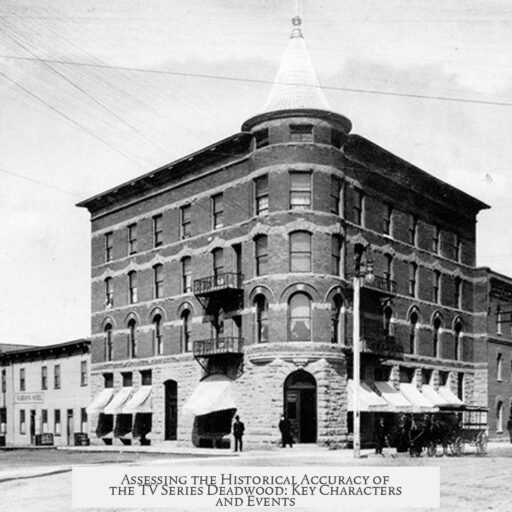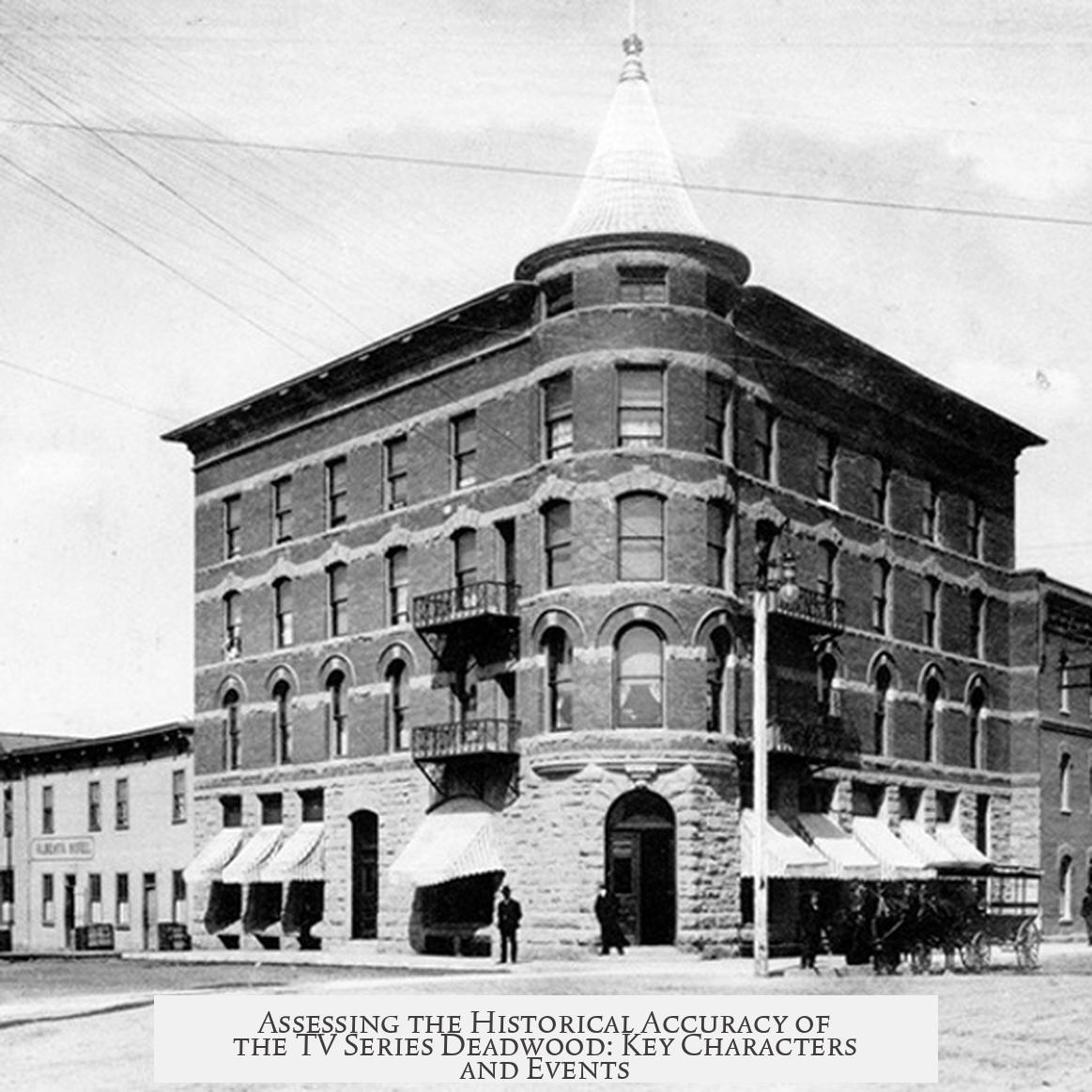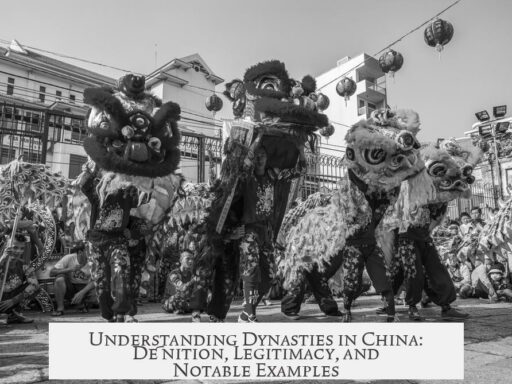The TV series Deadwood balances history with dramatization, taking considerable liberties with the lives and events it portrays. While rooted in real 1870s South Dakota figures and events, the series crafts personal relationships, character traits, and dialogue with creative embellishments. It prioritizes thematic honesty over strict historical precision.
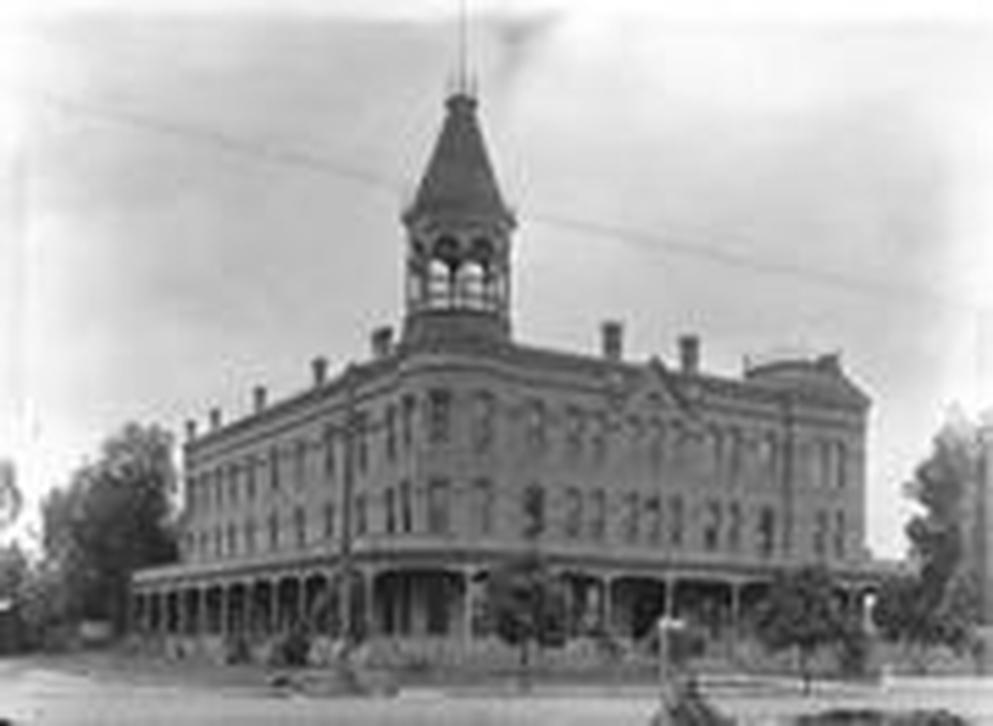
Al Swearingen, the notorious Deadwood saloon owner, appears with some accurate elements but many deviations. Historically, Swearingen married multiple times, with his first wife leaving due to spousal abuse. The series condenses these details and dramatizes his personal life differently. He shifted businesses from the Cricket Saloon to the Gem Theater, which burned down twice, facts only briefly reflected on screen.
Sol Star and Seth Bullock form a central duo in the show. Both were real businessmen whose ventures outgrew the hardware store depicted. In reality, they expanded into ranching, milling, auctioneering, and railroad development. Sol Star also held political offices, including mayor and state legislator, and never married—a fact that contradicts the series’ invented romantic subplot involving a prostitute employed by Swearingen, which is historically unsubstantiated and socially implausible.
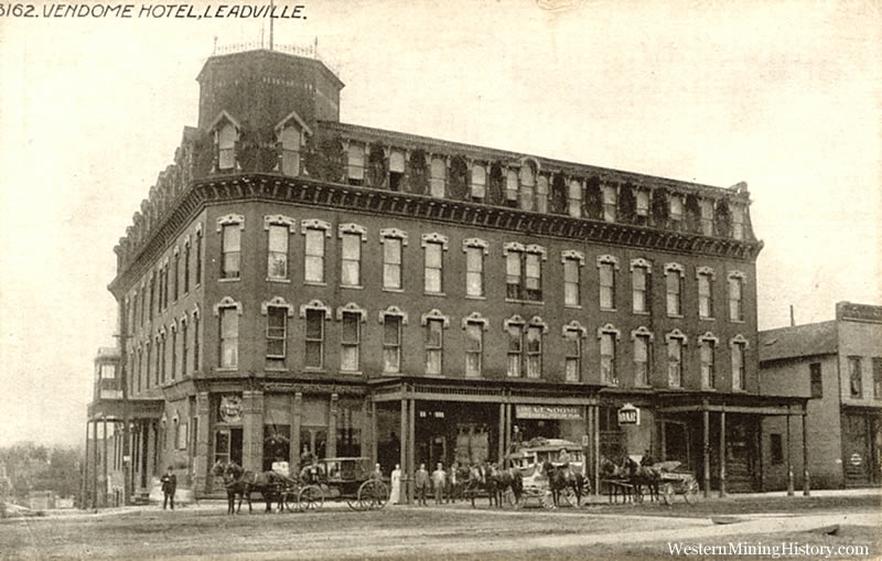
E.B. Farnham’s character receives an altered portrayal. Unlike the scheming figure on screen, Farnham was a legitimate businessman and key advocate for South Dakota statehood. He owned mining stocks, helped build toll roads, and served effectively as Deadwood’s mayor. His supportive role during the smallpox epidemic contrasts with the show’s buffoonish depiction.
Calamity Jane’s portrayal mixes truth and fiction. She did work as a prostitute and a scout for the U.S. Army but had no known lesbian relationships, which the show fabricates despite historical taboos making such details unlikely to be recorded. Jane’s claim of being Wild Bill Hickok’s child’s mother reflects her actual obsession with him. She sometimes wore feminine clothing, and her real nursing of smallpox victims is consistent with history.
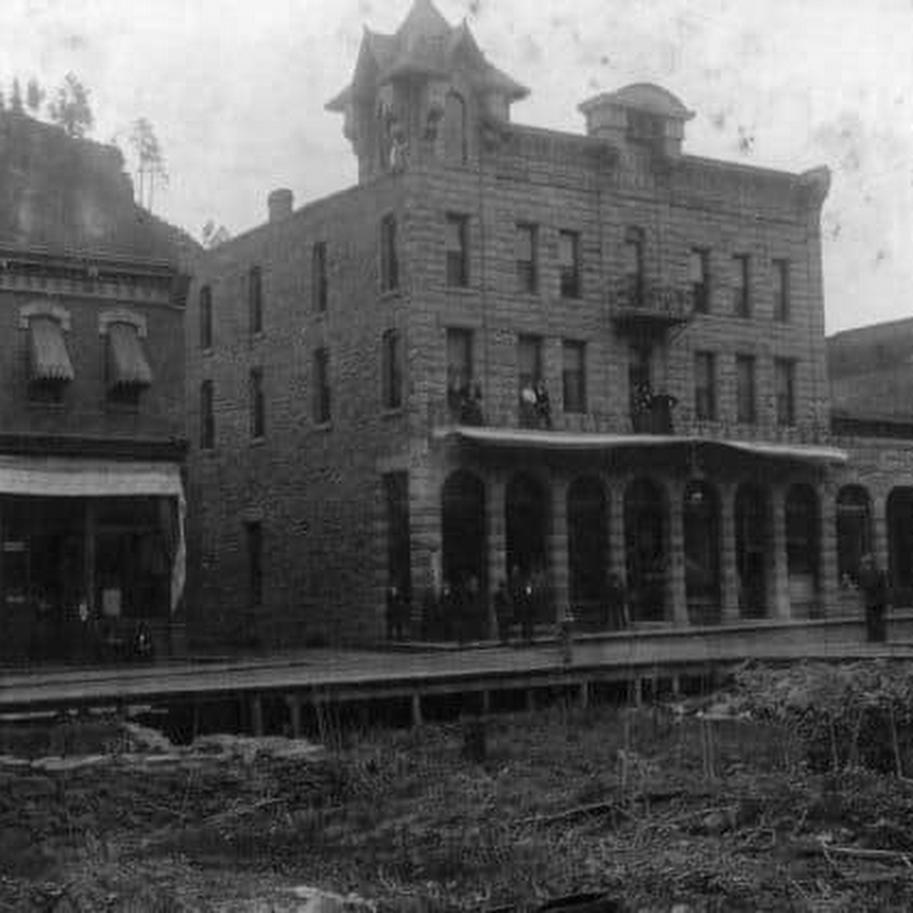
Wild Bill Hickok’s timeline intertwines loosely with Seth Bullock and Sol Star’s arrival. The show depicts immediate friendships, while historically, Hickok was killed just one day after Bullock and Star came to town, limiting the possibility of close ties. Bullock was the first sheriff but not the town’s first lawman, arriving after predecessors Issac Brown and Con Stapleton. Bullock never killed anyone in office, and his wife was not his brother’s widow as dramatized. Bullock’s efforts led to a relatively successful town cleanup, enabling him to grow his businesses. He constructed Deadwood’s first hotel, now a casino, not the Farnham-owned hotel shown. Later, Bullock was appointed U.S. Marshal and trained Theodore Roosevelt’s Rough Riders, though he did not see combat.
The dialogue and language use in Deadwood diverges sharply from historical norms. The frequent profanity is anachronistic, replacing religious oaths of the era with modern swear words to preserve emotional impact. Creator David Milch extensively researched period language but prioritized character honesty over verbatim speech. Milch embraced the philosophy that history is “a lie agreed upon,” allowing him to stylize dialogue heavily. His trademark heightened diction results in speech that sounds poetic rather than authentic. Milch also defended the profanity as plausible since much of 19th-century vulgar speech was underdocumented.
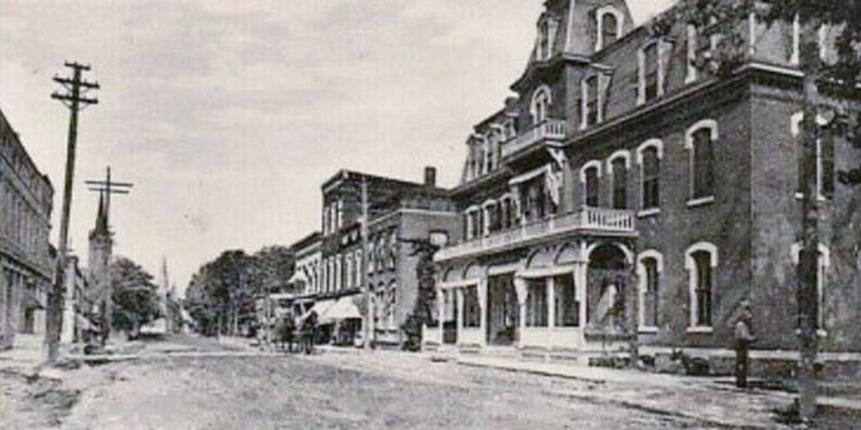
Certain events are historically well-captured, such as Wild Bill Hickok’s death, which corresponds with known accounts, including the iconic “dead man’s hand.” Yet, most of the show’s narrative and personal dynamics serve drama and thematic resonance rather than strict factual recounting. Historians acknowledge these divergences but recognize the series is more accurate in tone than in detail—similar to how Shakespeare dramatizes history.
| Element | Historical Fact | Deadwood Depiction |
|---|---|---|
| Al Swearingen’s Marriages | Multiple wives; abused first wife; left town eventually | Briefly mentioned; dramatized for narrative |
| Sol Star’s Personal Life | Never married; politically active | Shown romantically linked to prostitute (fictional) |
| E.B. Farnham’s Role | Mayor; mine stockholder; epidemic response | Buffoonish subordinate to Swearingen |
| Calamity Jane’s Relationships | Prostitute and scout; no confirmed lesbian links | Depicted in lesbian relationship (unsubstantiated) |
| Wild Bill and Bullock | Died day after Bullock’s arrival; no close friendship | Close friends with Bullock and Star |
| Language and Swearing | Religious oaths common; less modern profanity | Heavy modern profanity for dramatic effect |
- Deadwood captures the spirit of a lawless mining town but reshapes personal histories.
- Key characters are composites of fact and invention, designed to deepen storylines.
- Dialogue prioritizes thematic truth over linguistic science.
- The series’ use of profanity is an artistic choice to preserve emotional weight, not historical exactness.
- Events like Hickok’s death remain mostly faithful to history.
How Historically Accurate Was the TV Series Deadwood?
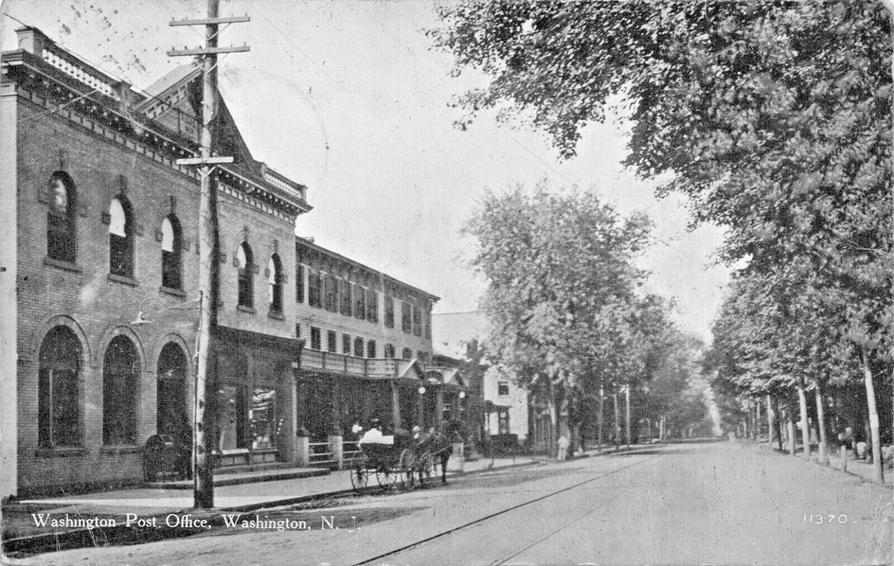
The TV series Deadwood embraces history—but don’t expect a history textbook. It delivers a rich tapestry of real characters and events, spun through a creative lens that prioritizes story over strict fact. But just how accurate is it? Let’s jump into the crooked alleyways and smoky bars of Deadwood, South Dakota, and sort the historical gold nuggets from the dramatic dust.
If you’re a history buff eager to spot which details hold water—or mud—in Deadwood, buckle up. The show takes real people and builds larger-than-life versions around them. Here’s a detailed dissection of key characters and moments, and where reality and fiction part ways.
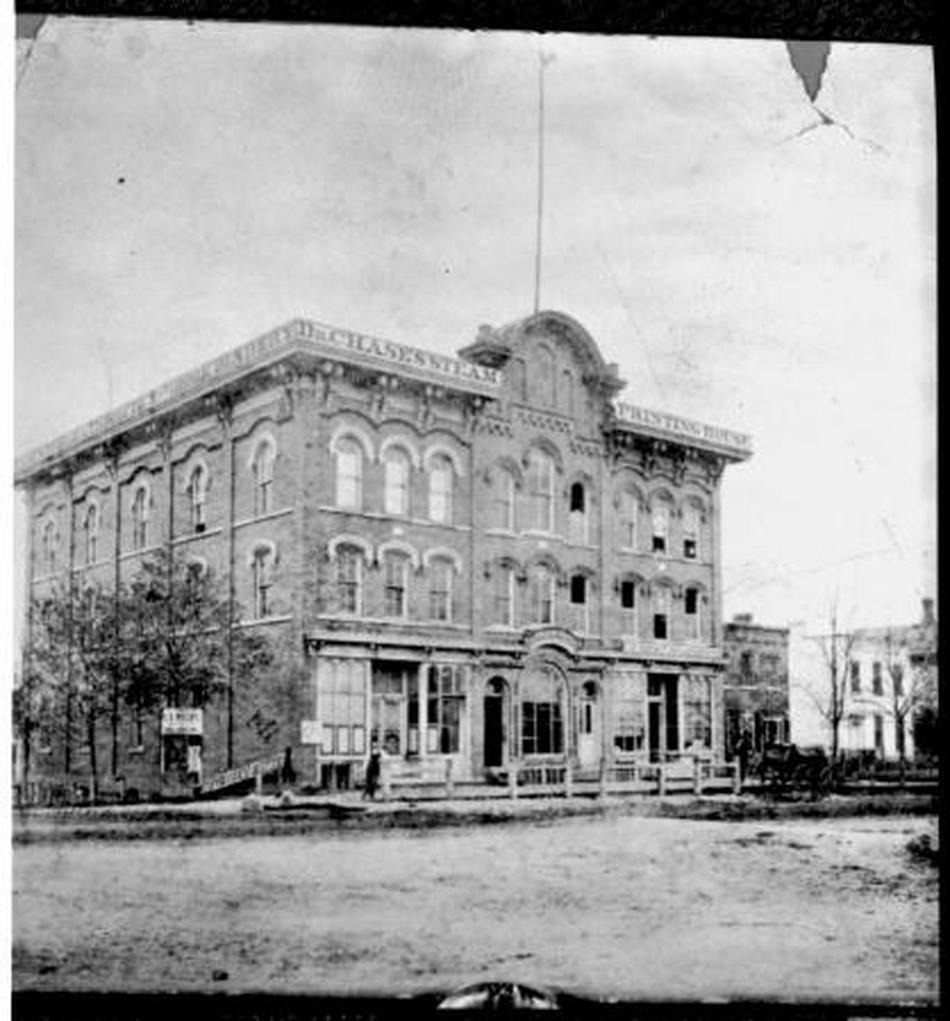
Al Swearingen: The Gambler and Saloon-Keeper with a Twist
Al Swearingen’s character wields a sharp wit and a sharper temper in the series. Historically, he married multiple times, and his first wife left because of spousal abuse—a harsh reality the show doesn’t dwell on. Swearingen ran both the Cricket Saloon and later the Gem Theater, which did burn down twice, as per records. The show captures the saloon owner’s cunning but glosses over the brutal personal history. It’s a slightly romanticized portrait, ignoring his darker sides for drama’s sake.
Sol Star and Seth Bullock: More Than Hardware Store Partners
Look beyond the hardware store. The real Sol Star and Seth Bullock expanded their ventures hugely—ranching, milling, auctions, even railroad expansion. They helped found Belle Fourche, South Dakota, too. Star played politics, serving as Deadwood’s mayor and a state legislator. And here’s the real kicker—he never married, and certainly never tangled romantically with one of Swearingen’s prostitutes, a storyline the show toys with for tension but has no historical backing.
Bullock was indeed Deadwood’s first sheriff but was not the very first lawman; Marshal Isaac Brown preceded him but was killed before Bullock’s appointment. Bullock’s actual tenure was marked by a successful crackdown on lawlessness rather than the chaotic shootouts portrayed. He didn’t kill anyone in office, his wife was not his brother’s widow, and he built Deadwood’s first hotel—the Bullock Hotel, which today is a casino. Plus, his impressive connection with Theodore Roosevelt and his military commission adds layers the show brushes past.
E.B. Farnham: The Town’s Real Mayor, Not the Buffoon
The show’s depiction of Farnham leans comedic and less flattering, but the true man was a pillar. Farnham championed South Dakota’s statehood movement, owned mining stock, and helped build toll roads. Plus, he genuinely was mayor of Deadwood and supported public health efforts during a smallpox outbreak. The series’ caricature misses these nuances and sacrifices them for lighthearted effect.
Calamity Jane: Complexity beyond the Rough-and-Tumble Legend
Calamity Jane is a difficult figure to pin down historically, and the show embraces her eccentricity. She worked as a prostitute and US Army scout but defies some TV portrayals. The lesbian relationship with a madam depicted on-screen is, at best, speculative; homosexuality was taboo and undocumented in the era. Jane’s infamous claim to Wild Bill’s child is rooted in her obsession, not evidence. One highlight: she really did nurse smallpox victims, showing a humanitarian side often lost in myth.
Wild Bill Hickok and Seth Bullock: Friends on Screen, Stranger on History
On Deadwood, Hickok and Bullock quickly form a bond. Historically, Wild Bill was shot the day after Bullock and Star arrived—hardly enough time to become close friends. Their timelines barely overlapped, making their on-screen camaraderie a dramatic invention. Bullock’s clean-up of Deadwood was effective and methodical, unlike the rugged chaos shown. The personal aspects, like Bullock’s marriage and moral conduct, are polished for storytelling.
The Swearing and Stylized Speech: Truth or Creative License?
The series’ famously colorful language stands out. It’s anachronistic—a modern profanity patch on 19th-century expressions that were mostly religious curses. Creator David Milch, a former Yale professor, researched deeply but chose honesty to character over strict historical phrasing. Milch defends the strong language by noting primary sources show plenty of cursing, though not necessarily the words we hear. The dialogue is highly stylized and heightened, a Milch signature—it’s a creative choice that adds emotional punch, not a verbatim script.
Historical Events: Wild Bill’s Death as a Touchstone
Among the show’s most accurate moments is Wild Bill Hickok’s death. The tension, setting, and his famous “dead-man’s hand” poker legend are portrayed with reasonable fidelity. This event anchors one of the few firm historical moments in the series. Elsewhere, the narrative takes liberties, with emotional truths and character arcs crafted to fit the storytelling rather than stick to fact.
So What’s the Bottom Line?
Deadwood isn’t a documentary. It’s not aiming for pristine accuracy. Instead, it captures the wild spirit of the American frontier with rich characters who walk a line between myth and reality. The show weaves fact with fiction akin to Shakespeare’s history plays—both rooted in past events but tailored to engage, provoke thought, and reveal human nature.
- Benefits of the show’s approach: it humanizes legends while delivering gripping drama and thoughtful themes.
- Trade-offs: factual distortions and romanticized relationships that don’t hold up to scrutiny.
For viewers tempted to fact-check every line, the series offers many teachable moments. It’s a springboard to explore history rather than a final authority. Those fascinated by the period might appreciate reading beyond the show, digging into biographies and historical records.
Practical Tips For History Buffs and Fans
- If you crave the true Deadwood story, seek out detailed histories or documentaries alongside the show.
- Use the characters’ TV arcs as starting points to explore their real biographies, which are often richer and more complex.
- Remember that the language, relationships, and events are crafted for drama, not diaries.
- Consider the show a historical fiction masterpiece, blending researched facts with original storytelling to illuminate the chaos and charm of the frontier.
Have you noticed these creative twists in Deadwood? Which characters’ histories surprised you? Could the show have balanced authenticity better without losing its edge? Share your thoughts below!
